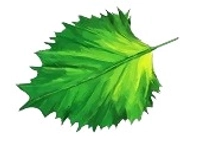
Joginder Nursery
Product details
Terminalia Arjuna, commonly known as the Arjuna Tree, is a revered tree native to the Indian subcontinent. Known for its impressive size and significant medicinal properties, this majestic tree can grow up to 20-25 meters tall. It is highly valued in traditional medicine for its various health benefits and is also appreciated for its ornamental qualities. The Arjuna Tree features a dense canopy of green leaves and produces small, pale yellow flowers that add to its aesthetic appeal.
Medicinal Value: Terminalia Arjuna has been used in traditional Ayurvedic medicine for centuries. It is renowned for its cardioprotective properties, helping to maintain heart health by supporting healthy blood pressure and cholesterol levels. The bark is commonly used in treatments for cardiovascular conditions and respiratory issues.
Aesthetic Appeal: The Arjuna Tree’s broad, rounded canopy provides excellent shade, making it an attractive option for gardens, parks, and urban landscapes. Its dense foliage offers a lush, green backdrop throughout the year.
Erosion Control: With its extensive root system, Terminalia Arjuna is effective in preventing soil erosion. It stabilizes the soil on slopes and riverbanks, reducing runoff and helping to manage erosion.
Wildlife Habitat: The tree supports local wildlife by providing shelter and food. Its leaves and flowers attract various insects, birds, and small mammals, contributing to local biodiversity.
Timber and Crafting: The wood of Terminalia Arjuna is durable and used in traditional crafting and construction. It is valued for its strength and versatility in various applications.
Light: Terminalia Arjuna thrives in full sun to partial shade. Ensure the tree receives at least 6 hours of direct sunlight daily for optimal growth and foliage density.
Watering: Water the tree regularly during its initial establishment phase. Once established, it is moderately drought-tolerant but benefits from occasional watering during prolonged dry periods.
Soil: This tree prefers well-drained, sandy or loamy soils. It can tolerate a range of soil types but performs best in slightly acidic to neutral pH levels.
Pruning: Pruning is generally not required but can be done to shape the tree or remove any dead or damaged branches. The best time to prune is in late winter or early spring before new growth begins.
Fertilization: Feed with a balanced, slow-release fertilizer in early spring to promote healthy growth and foliage. Avoid over-fertilizing, which can lead to excessive foliage growth at the expense of the tree’s structural integrity.
Leaf Drop: Natural leaf drop can occur as part of the tree’s seasonal cycle. However, excessive leaf drop may result from drought stress, pest infestations, or poor soil conditions. Ensure consistent watering, inspect for pests, and improve soil quality if needed.
Pests: The tree can be affected by pests such as scale insects, aphids, and caterpillars. Regularly inspect the tree and treat infestations with appropriate insecticides or natural remedies like neem oil.
Fungal Diseases: Fungal infections can cause leaf spots or mold. Improve air circulation around the tree, remove affected leaves, and apply a fungicide if necessary to manage fungal issues.
Root Rot: Overwatering or poorly drained soil can lead to root rot. Ensure the soil is well-drained and water only when the top inch of soil feels dry to prevent root rot.
Please Note: Images are for reference purposes only. Actual product may vary in shape or appearance based on climate, age, height, etc. The product is replaceable but not returnable. Plants will be delivered in black nursery poly bag or pot unless until mentioned on the product page.
Similar products